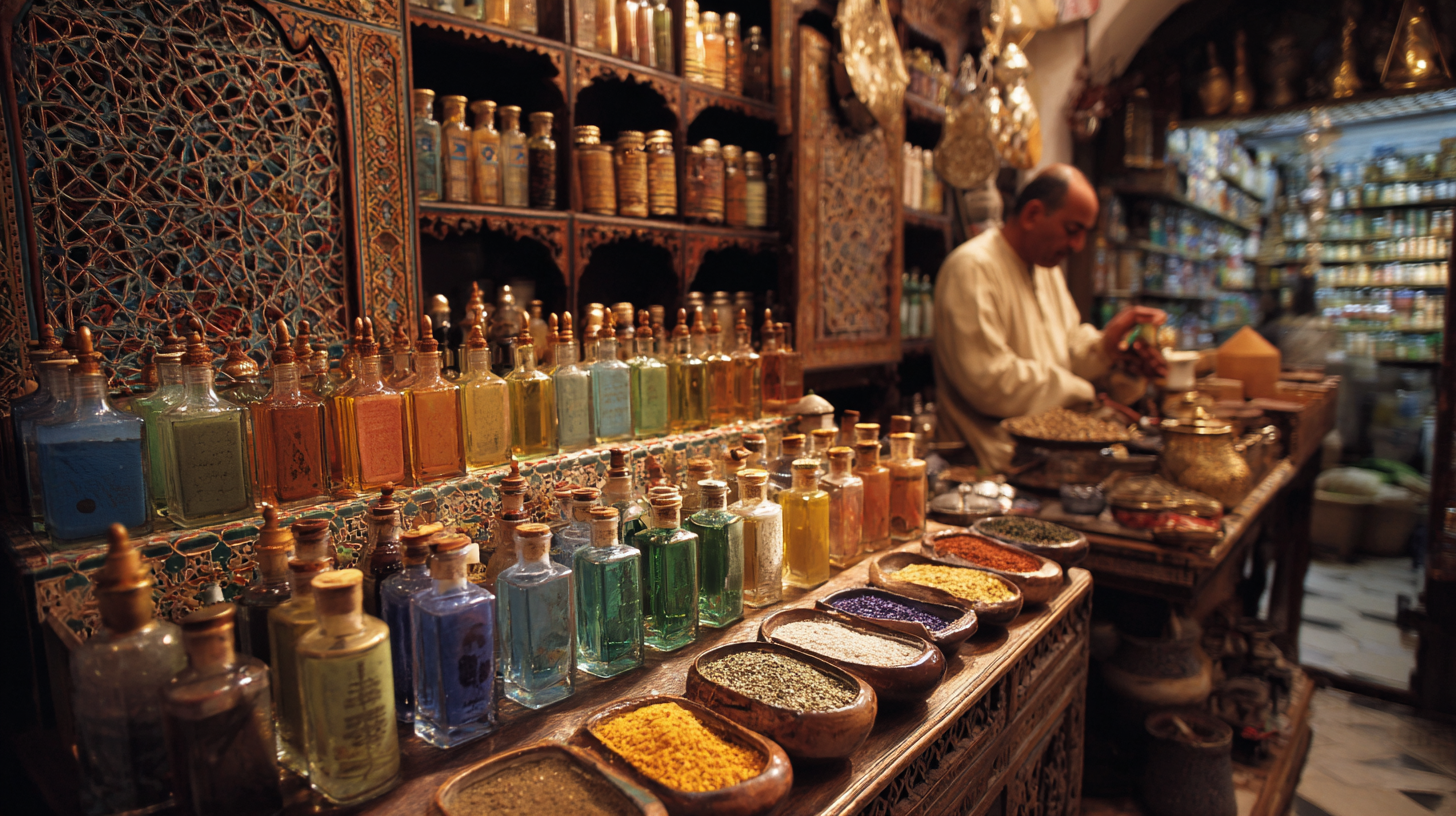The Historical Roots of Moroccan Fragrance Traditions
The story of Moroccan perfumery begins centuries ago, when trade routes connected North Africa with the Middle East, Europe, and Asia. These exchanges brought exotic resins, spices, and oils that blended with local botanicals to create distinctive aromatic practices. From the bustling markets of Marrakech to the desert caravans, scents were more than luxury items; they were part of identity, ritual, and hospitality. Perfumes were often used to welcome guests, symbolizing respect and warmth.
Over time, Moroccan fragrance traditions became deeply interwoven with religion and medicine. Aromatic resins like frankincense and myrrh were burned in rituals, while herbal concoctions served as remedies. The layering of these traditions created a uniquely Moroccan olfactory palette that influenced how fragrances were perceived and valued. This heritage, passed down through generations, continues to shape the foundations of scent-making today, ensuring that Moroccan culture remains an integral part of global perfumery.
Key Ingredients: Spices, Resins, and Aromatic Woods
Morocco’s landscapes provide an abundance of raw materials that form the backbone of its fragrance identity. The spice markets overflow with cinnamon, clove, and saffron, all prized for their warmth and intensity. Resins like amber and labdanum add depth, while cedarwood from the Atlas Mountains introduces a grounding element. Together, these ingredients form the aromatic signatures that distinguish Moroccan scents, offering a balance between sharp, sweet, and earthy notes.
What makes these materials especially influential is their versatility. Each ingredient can stand alone or be combined into complex blends that echo Morocco’s diversity. Spices evoke the sensory vibrancy of local cuisine, while resins capture the mystery of ancient rituals. Woods add timeless strength and endurance, connecting fragrance wearers to the landscapes themselves. This interplay of natural resources and cultural associations has made Moroccan ingredients indispensable to perfumery across the world.
The Role of Rituals and Daily Life in Moroccan Scent Culture
In Morocco, fragrance is not merely an accessory but an integral part of daily customs. Incense burning is common in households, used to cleanse spaces and mark moments of togetherness. Weddings, religious gatherings, and family celebrations often feature the generous use of aromatic blends, which add both symbolic and emotional depth to the occasions. These practices highlight how deeply embedded scents are in the rhythm of Moroccan life.
Beyond rituals, the everyday use of oils and perfumed waters reflects a cultural appreciation for harmony between body and spirit. Scent is considered a means of purification and a way to elevate one’s presence in social settings. Whether in small gestures like applying orange blossom water before greeting guests or through elaborate ceremonial uses, fragrance represents continuity between the past and present. This close connection to lifestyle ensures that Moroccan olfactory traditions continue to thrive within both local and global contexts.
Artisanal Techniques: From Souks to Modern Perfumery
The art of Moroccan perfumery thrives on craftsmanship that has been refined over generations. In the vibrant souks, artisans carefully blend raw materials using inherited knowledge and intuitive skill. Distillation of roses, enfleurage of delicate petals, and the slow infusion of resins all reflect techniques passed down through family lineages. Each method emphasizes patience and respect for the materials, ensuring that every fragrance is a testament to cultural heritage.
As global interest in natural and artisanal products grows, Moroccan perfumery techniques have found new resonance. Modern fragrance houses and independent creators draw inspiration from these practices, adapting them to contemporary demands. This evolution does not diminish traditional values; instead, it amplifies them, demonstrating the enduring relevance of Moroccan expertise. The dialogue between heritage and innovation ensures that Moroccan artistry continues to shape perfumery on a worldwide scale.
Moroccan Influence on Contemporary Global Fragrance Houses
Moroccan scents resonate far beyond their origin, shaping the creative directions of perfumers worldwide. The depth of spices, the warmth of resins, and the grounding power of woods inspire new compositions that bring Eastern sensibilities to diverse markets. Many contemporary fragrances borrow Moroccan themes to create exotic, sensual impressions that appeal to international audiences. These influences extend beyond ingredients, embracing the storytelling traditions that define Moroccan olfactory culture.
At the same time, global perfumers reinterpret Moroccan inspirations through their own cultural lenses. By weaving local elements with Moroccan motifs, they create hybrid scents that embody cross-cultural exchange. This blending allows perfumery to transcend geographical boundaries, fostering innovation while celebrating authenticity. The Moroccan influence remains a constant thread, ensuring that its heritage is both preserved and reimagined in the ever-evolving fragrance landscape.
Future Directions: Sustainability and Innovation in Eastern-Inspired Perfumes
Sustainability has become a defining factor in the future of perfumery, and Moroccan traditions provide valuable lessons for this evolution. The respect for raw materials and artisanal techniques naturally aligns with contemporary efforts to protect ecosystems and support local communities. By cultivating plants responsibly and preserving traditional methods, perfumery can remain both authentic and environmentally conscious. This intersection of old and new ensures that Moroccan influence continues to evolve while honoring its roots.
At the same time, innovation drives the global fragrance industry toward new horizons. Emerging technologies allow for the creation of synthetic accords that replicate rare ingredients without depleting natural resources. Eastern-inspired perfumes can thus expand their palette while reducing environmental impact. The challenge lies in balancing tradition with progress, ensuring that cultural depth is not lost. Ultimately, the fusion of Moroccan heritage with modern sustainability and innovation charts a promising path for the future of perfumery.
- Preservation of traditional artisanal methods supports cultural identity
- Sustainable harvesting ensures the longevity of natural ingredients
- Technological advances enable ethical production of rare accords
- Global collaboration fosters cross-cultural creativity in scent design
- Eastern inspirations continue to shape new olfactory experiences
The legacy of Moroccan perfumery is far from static. Its blend of tradition, sustainability, and innovation ensures ongoing relevance in a globalized fragrance market. By embracing responsible practices while continuing to experiment, perfumery can both respect its heritage and meet modern demands.
Questions and Answers
Answer 1: Trade routes introduced exotic resins, spices, and oils to Morocco, which blended with local botanicals and created unique olfactory traditions that became part of daily life and rituals.
Answer 2: They offer versatility and depth, combining warmth, sweetness, and earthiness, making them essential for creating complex and balanced fragrances.
Answer 3: Fragrance is used in rituals, hospitality, and personal care, symbolizing purification, respect, and continuity between past and present.
Answer 4: Moroccan artisans emphasize patience and traditional methods like distillation and infusion, which are adapted by modern perfumers while retaining cultural authenticity.
Answer 5: Contemporary perfumers reinterpret Moroccan ingredients and storytelling traditions, blending them with local elements to create cross-cultural, innovative scents.

